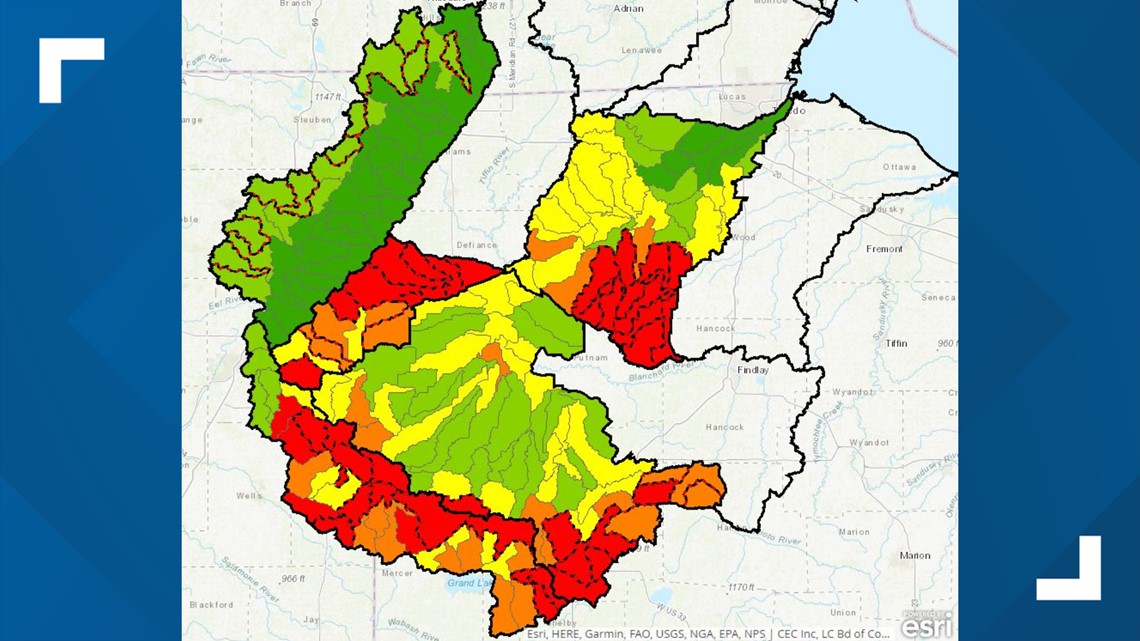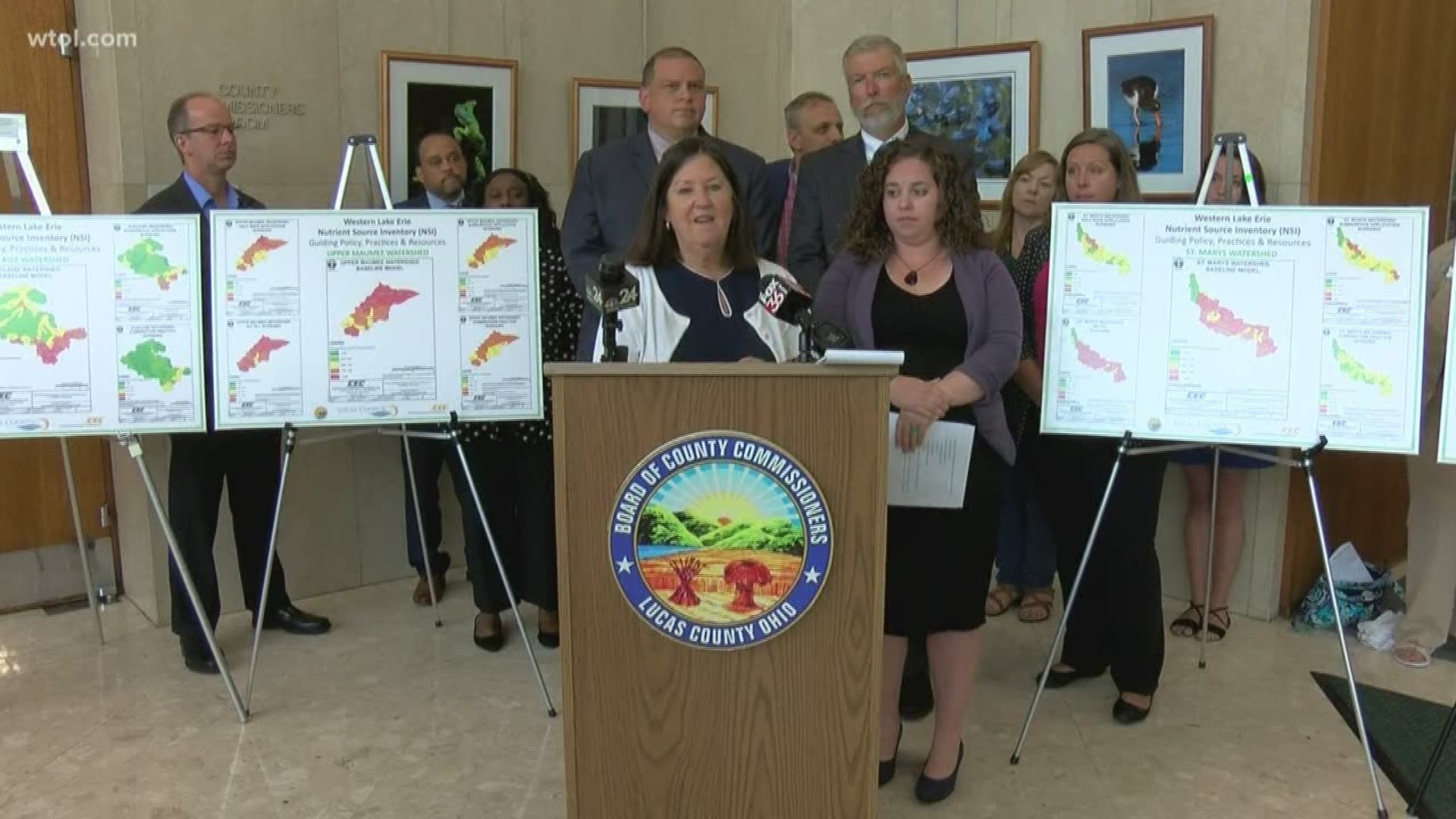TOLEDO, Ohio — The city of Toledo and Lucas County on Monday released data that pinpoints the origins of the nutrients that feed the algal blooms in Lake Erie.
The Nutrient Source Inventory began nearly three years ago by the Lucas County Sustainability Commission.
The commission released the final model mapping of the findings, which shows what areas in the Western Basin watershed produce the most nutrient runoff.
Green indicates fewer amounts of phosphorus, which is one of the nutrients that feeds algal blooms, while red indicates more phosphorus.
While some areas are mostly green, others such as the St. Mary's River watershed were almost entirely red.


According to county and city leaders, the data provide definitive proof that the concentrated animal feeding operations or factory farms in that area are the biggest to blame.
"That (data) identifies the areas that are contributing to the algal bloom problem. And, no surprise, this is a problem being created by agricultural runoff, it just is," Toledo Mayor Wade Kapszukiewicz said.
Kapszukiewicz said the state of Ohio has spent more than $3 billion since the 2014 water crisis, only for the area to see the blooms continue to worsen.
Since the Toledo water crisis, however, many in the agricultural community have worked to find ways to limit their nutrient runoff into the Lake Erie Watershed. Many farmers implement the 4R's of nutrient stewardship, using the:
- Right fertilizer source at the
- Right rate, at the
- Right time and in the
- Right place.
County and city officials say that with Monday's this visual data in hand, they hope to use it as leverage to get state and federal funding directed to the areas of higher phosphorus runoff.
"We think that for years and years and years, millions of dollars have been wasted, and now you can target funds in the right areas," Lucas County Commissioner Tina Wozniak said.
"You can spend all of the money in the world. You can throw as much money as you want at this problem. Without accountability, it's wasted money," Kapszukiewicz said.
Both city and county officials said they are willing to work with the communities and industries who are at fault for the algal issue.
"One of the great injustices of what's happened over the last several years is that Toledoans are paying for a problem that is being created elsewhere," Kapszukiewicz said.
The Nutrient Source Inventory began as a way for the city of Toledo and Lucas County to find the root cause of the excessive nutrients entering Lake Erie's western basin.
Now that the data show that phosphorus runoff is highest in places like the St. Mary's River watershed - and not the upper Maumee River watershed - Kapszukiewicz said the argument that municipality sewers are also to blame needs to end.
"The citizens of Toledo have fixed our water reclamation plant; we're not contributing anything to this problem. The problem is being caused by agricultural runoff. Everyone knows it and this data now confirms it," he said.
Leaders also said the data is being made public not to point the finger away from Toledo and Lucas County, but to showcase who the city and the state can partner with to fix the problem.
"Denial is not an answer. Now that we know where these hot spots are, we can begin trying to engage in best practices," Lucas County commissioner Gary Byers said.
The data and maps, along with the scientific citations are available for everyone to see here.
READ MORE ON LAKE ERIE:

